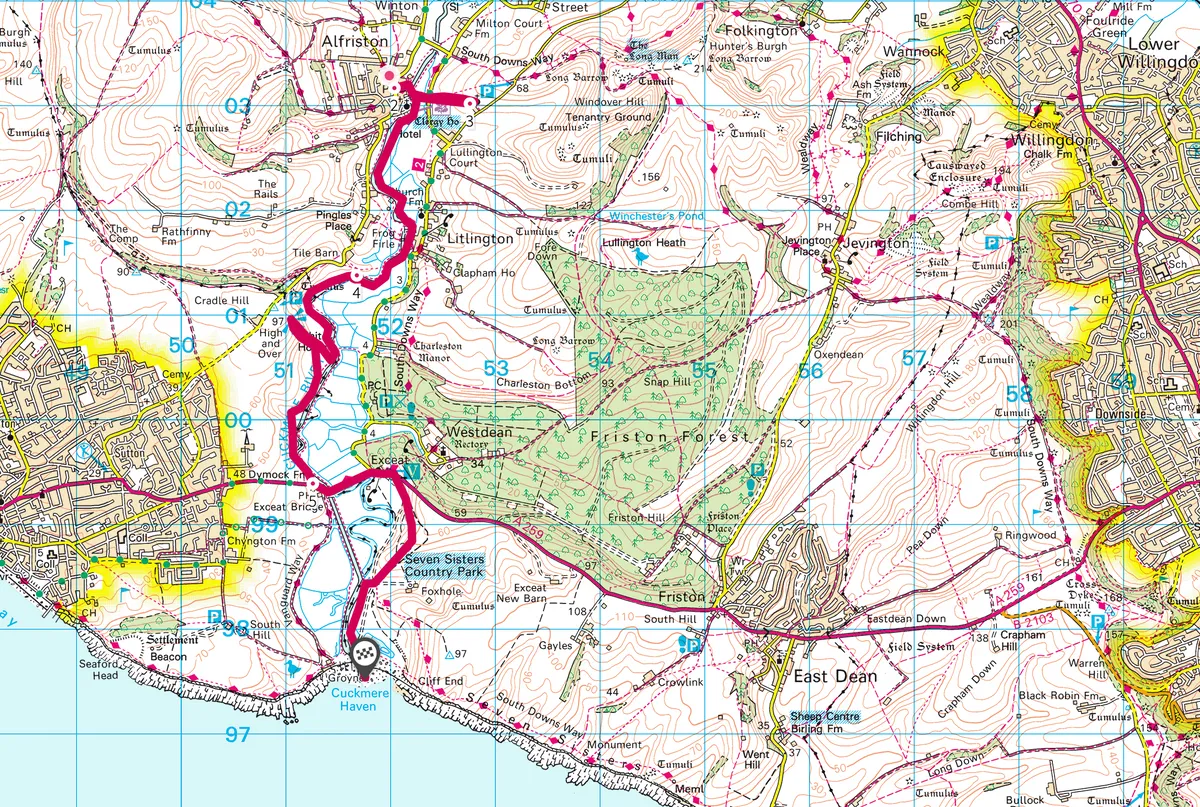Smallest and narrowest of the Sussex Wealden rivers flowing into the English Channel, the Cuckmere has never had a port at its outflow and remains the only undeveloped Sussex river mouth.
It retains much of its medieval character as it bends through an ancient land of sheep-grazed chalk downs, Norman churches, and verdant meadows.
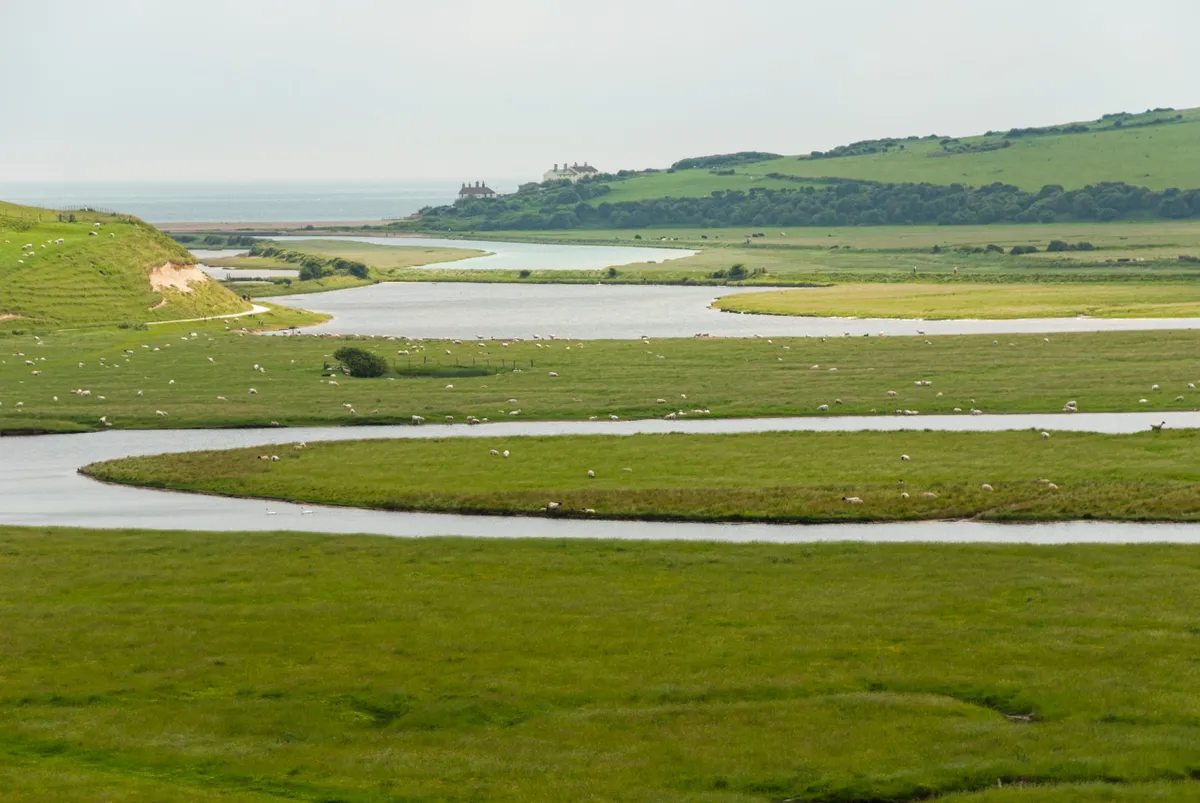
River Cuckmere walk
6 miles/9.5km | 3.5 hours | easy–moderate
1. Lost meanders
Alfriston is a picturesque village of higgledy-piggledy buildings, often busy with tourists in the summer months. Start at the long-stay car park, walking past the George Inn before taking the narrow twitten (local dialect for alley) between the flint buildings down towards St Andrew’s Church. Pass to the left of the village green and head to the wooden White Bridge. The river here is only a few metres wide. Cross to the east bank, remembering that you can swap and change at various footbridges on your way south.
The fields are grazed, so be sure to heed all the obvious warnings about livestock, keeping dogs and children under control. The river here is tidal and part of the channel has a brackish quality shown by a change in plant colour on the inner margins of the waterway. The riverside meadows are criss-crossed with ditches and dykes, each sickle-shaped water body an original meander of the Cuckmere and evidence of the river’s transformation over millennia. The present floodway was fixed by the building of raised banks in the 18th and 19th centuries.
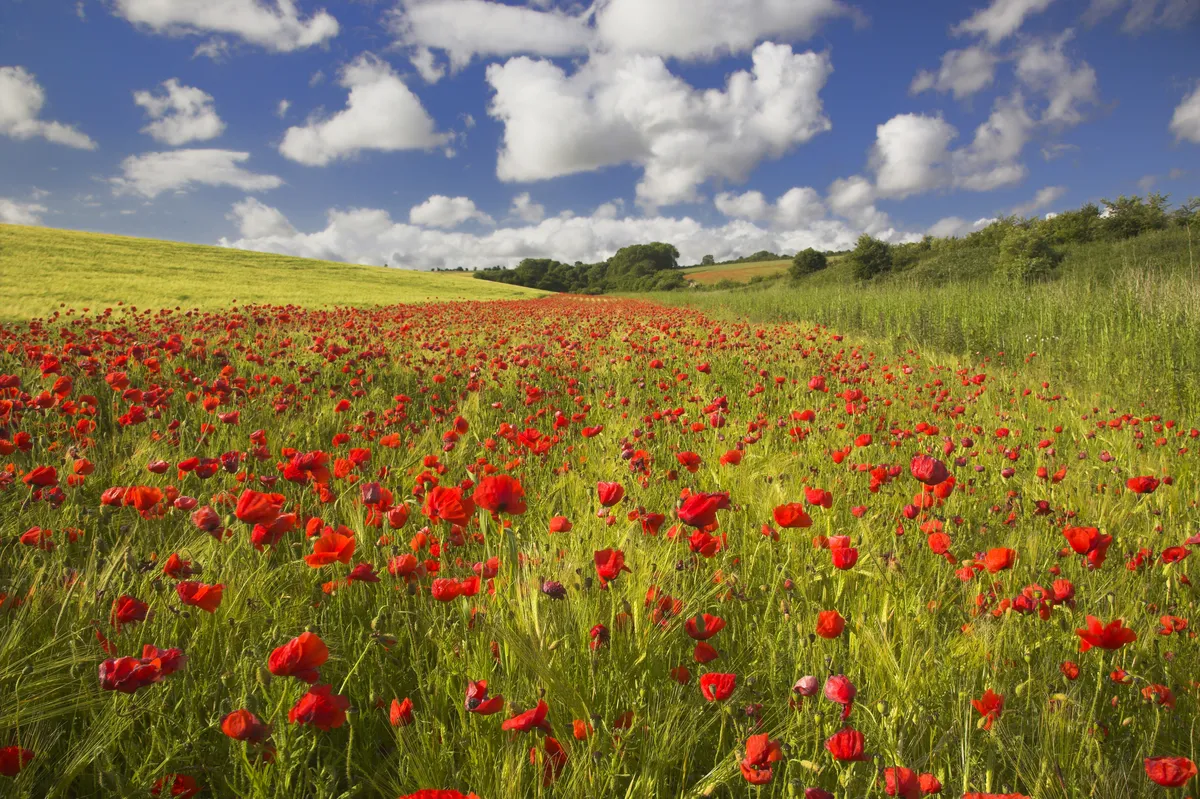
2. Church to horse
If you fancy a detour, cross the fields to Lullington’s Church of the Good Shepherd, said to be the smallest church in England with just 20 seats.
Back at the river, continue on to Litlington, keeping an eye out for the late 19th-century white horse carved into the High and Over hillside.
3. Bird’s-eye view
Cross to the western bank of the Cuckmere on one of the footbridges and, if your puff is up to it, further down take the path to the top of High and Over hill for fine views across Friston Forest. The meadows below show a series of Parallel ridges – these ancient channels were deliberately flooded in winter to allow rich silt-laden water to fertilise the soil. The practice resulted in improved grazing in the summer months.
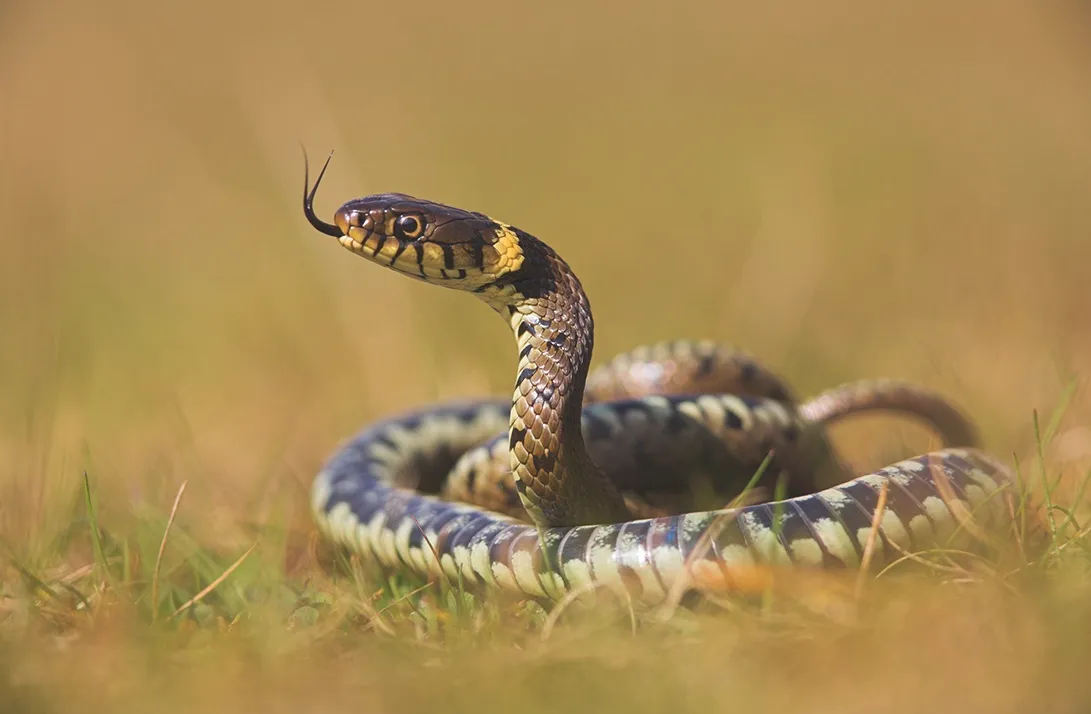
4. The cut
At Exceat Bridge, the 19th-century ‘cut’ – a flood defence structure – is at odds with the otherwise sinuous character of the river. Saltmarsh plants are well established here. Cross to the Seven Sisters Country Park, looking down on the Cuckmere’s classic broad meanders, and then walk down the easy path to the beach.
5. Foreshore finish
At Cuckmere Haven, the river becomes shallow over a bed of shingle, making it easily fordable at low tide. The Seven Sisters chalk cliffs to the east make a perfect backdrop to playing in the rock pools and paddling on the seashore. Arrange to be picked up by a friend at Exceat, or walk back.
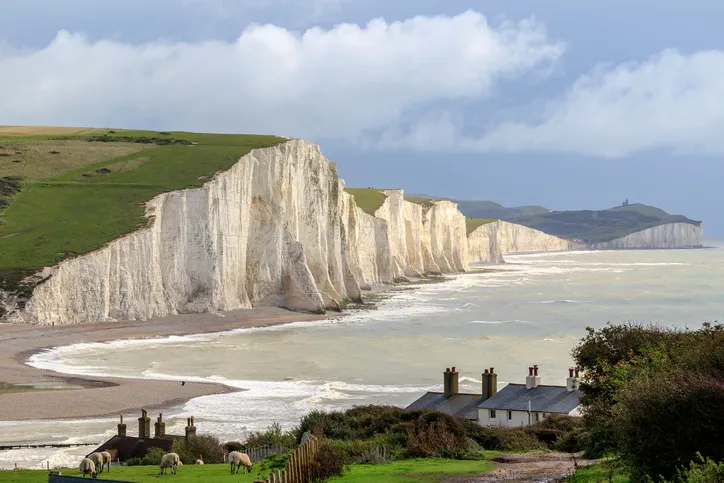
Cuckmere River map
Cuckmere River walking route and map.
